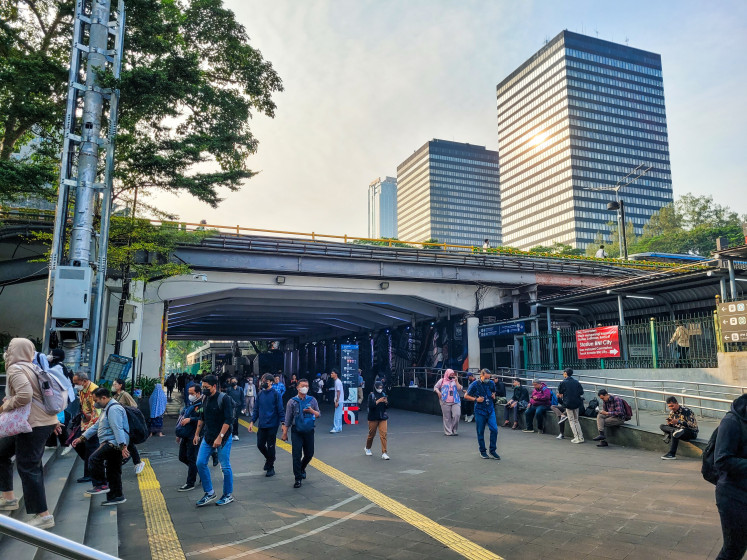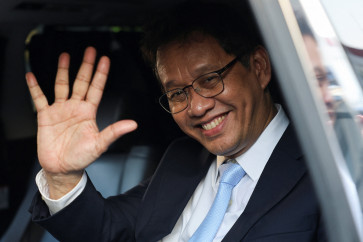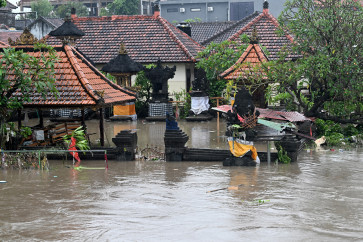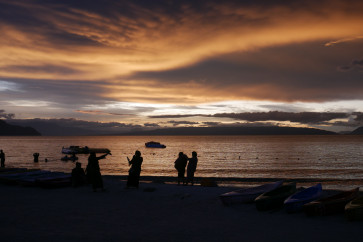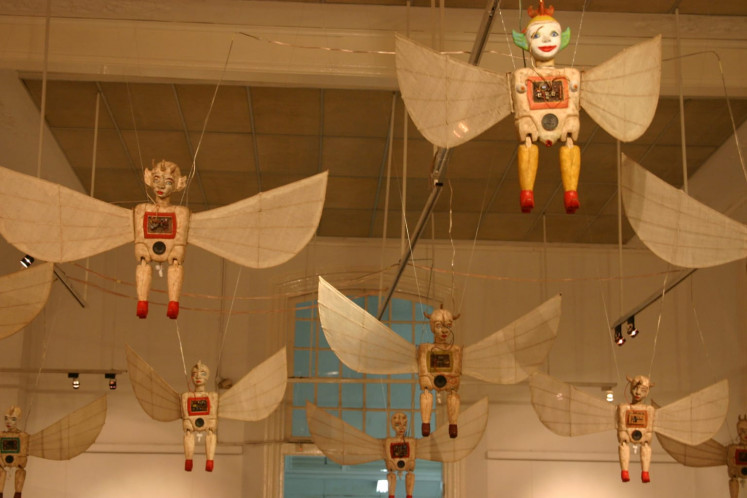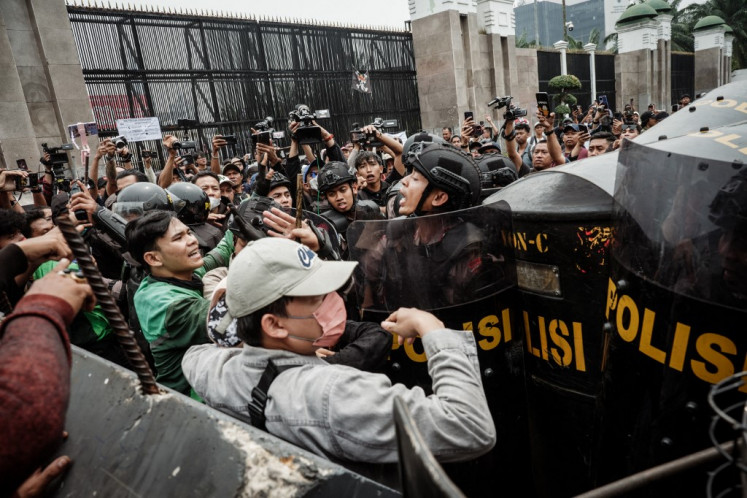Popular Reads
Top Results
Can't find what you're looking for?
View all search resultsPopular Reads
Top Results
Can't find what you're looking for?
View all search resultsSurakarta Palace's Mahesa Lawung ritual highlights tolerance, harmonious living
Change text size
Gift Premium Articles
to Anyone
U
nder a huge banyan tree, Surakarta Palace cleric, Kanjeng Raden Aryo Tumenggung (KRAT) Pujodiningrat, led a prayer in four languages: Arabic, Javanese, Hindi and Pali. Hundreds of abdi and setono dalem (royal servants) could be seen following the service solemnly.
A variety of offerings, such as traditional snacks, ingkung chicken, ciu (rice wine from Bekonang), a sunflower, tens of grasshoppers and one buffalo head were lined up under the tree as part of the Mahesa Lawung ritual that took place in the peaceful Krendawahono Forest on Thursday. The Surakarta Palace routinely holds the ritual in the fourth month of Hijriyah (Islamic) calendar on Monday or Thursday.
"The prayer is relevant to our nation's current situation, amid decreasing tolerance and harmony," said the palace's spokesperson Kanjeng Gusti Pangeran Haryo (KGPH) Puger, adding that Mahesa Lawung was an offering ritual to Dewi Kalayuwati, who is believed to be in Krendawahono Forest and the guardian of Surakarta Palace from the northern side of the supernatural world.
The forest is said to serve as the palace's entrance from the north. Supernatural beings in Krendawahono are believed to prevent bad forces from entering the palace.
Puger said the Mahesa Lawung tradition had existed since the Majapahit era and continued on during the Pakubuwono II era. During the transfer of power from Kartasura to Surakarta in 1670, the King is said to have held wilujengan rituals to ease the process.
(Read also: Surakarta parade celebrates Chinese-Javanese harmony, tolerance)
"Mahesa Lawung is a ritual of praying to God in order to provide solutions to all problems," he said.
Prior to the ceremony in the forest, the ritual kicked off with hundreds of abdi dalem parading offerings from the palace's Dalem Gondorasan (kitchen) to Siti Hinggil. They later took the bus to visit the forest that is about 20 kilometers away.
The peak of the ritual was marked by burying the buffalo's head, blood, skin, offal and feet in the forest area. The offerings were later savored by the participants.
"The ritual of burying the buffalo head means getting rid of stupidity. It is also serves as our prayer to God to always bless the palace," said another spokesperson of the palace, Kanjeng Pangen Winarno Kusumo.
A humanist from Surakarta, Sugiyatno Ronggojati, said that the forest was often described as something scary and wicked. According to the myths, it is the place where giants and evil spirits reside.
"If the forest is not made scary, people will not hesitate to cut down the trees. These stories more or less have helped to lower deforestation, especially in village forests on Java," he said.
"Many lessons can be learned from the Mahesa Lawung ritual. One of them is preserving the forest. Humans must also remember their God, whatever religion they believe," he added. (kes)


